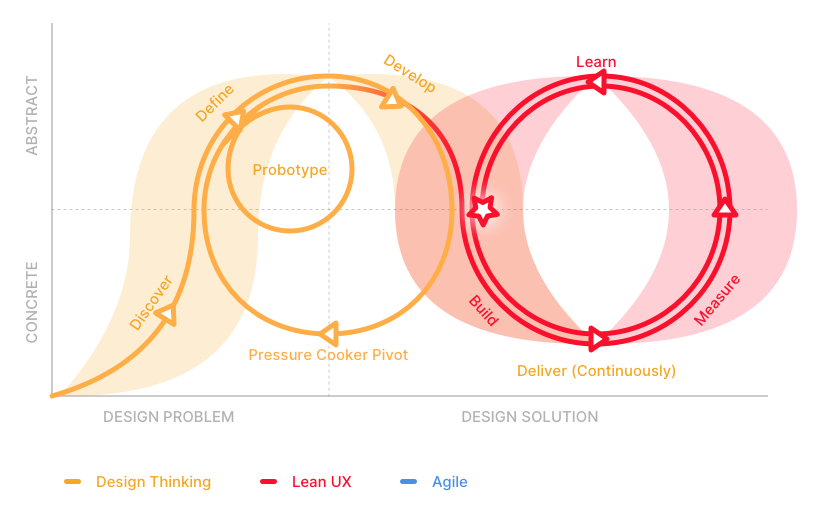The Process in Practice
Models are not reality. But they serve as a North Star, and make us feel safer along the way. As the design squiggle (Newman, 2002) highlights, the design process is filled with uncertainty, with the designer often feeling thrusted in seemingly random directions.
Design processes should be used as guidelines, not rules. Andy Young compared methodologies to recipes. You start following them step-by-step, but over time you will learn where and how to deviate and manage your own process (Young, 2020). Matt Kendall voiced the same sentiment:
Even when you follow the process, you could get lost in the reads, the industry doesn't tell often enough that it stays confusing and hard.
The following chapters will detail our group process, tools and techniques during the Experience Design course at Hyper Island as we set out to solve a design brief by PVH:
Below is the depiction of our process - we heavily adapted the ideal process to fit our needs.

Pressure Cooker
Source: (Google Ventures, 2010)
What is it
We started our process with a pressure cooker, moving from research to prototyping in just 5 days. The aim was to get our assumptions out and even test some initial findings. At the end of the pressure cooker we had dozens of ideas, 9 of which we decided to take with us into the new cycle as sacrificial concepts.
Reflection
The pressure cooker gave us an opportunity to run two iterations of the Design Thinking process instead of one and was hugely beneficial for the amount of directions we could explore.
However, we noticed that we had the urge to hold on to our initial findings throughout the process. It also threw us out of cadence with the crew. Be sure that the project is set up to do a pressure cooker and the entire team is on board.